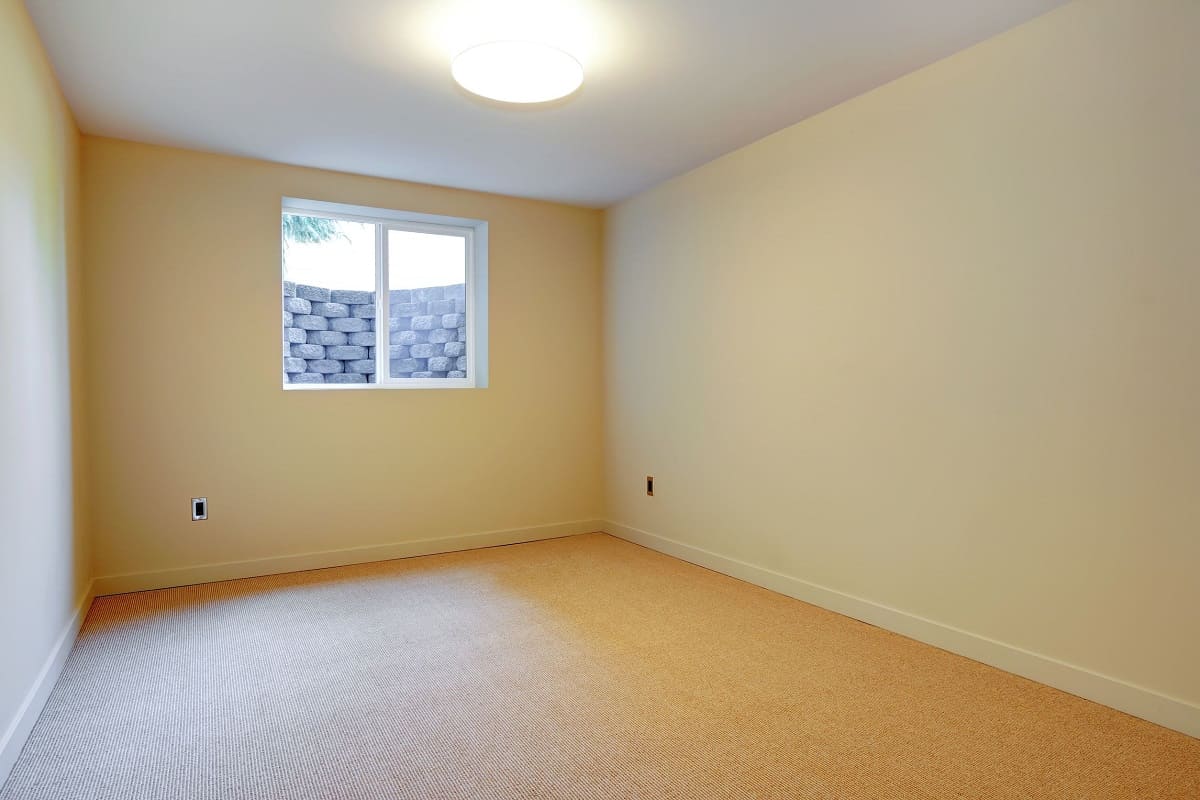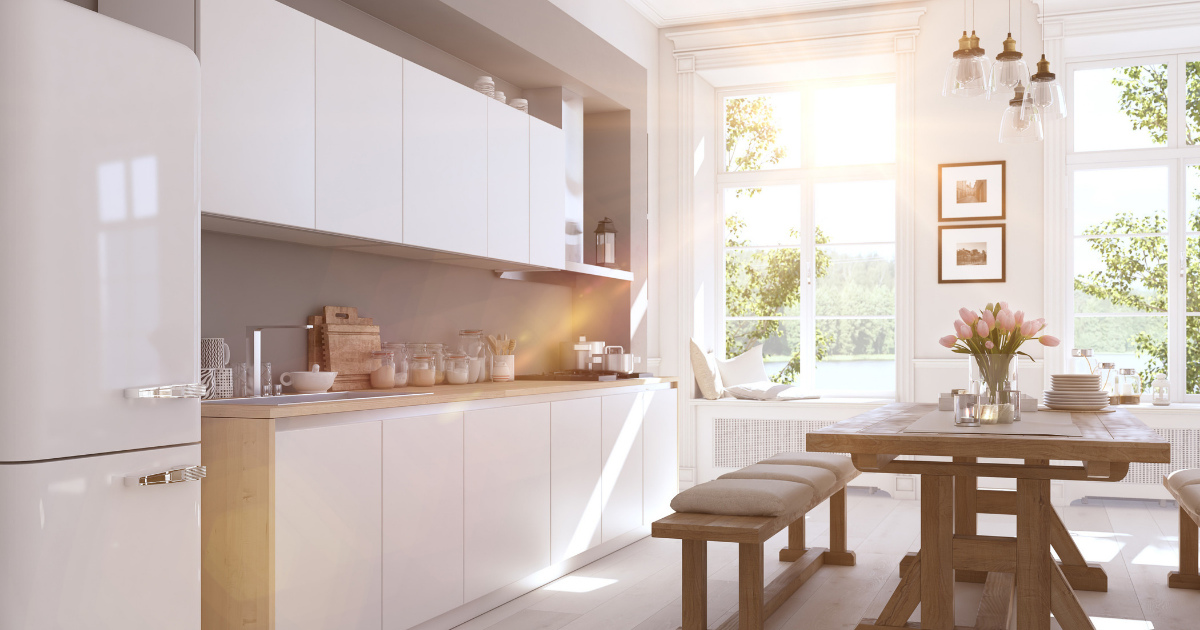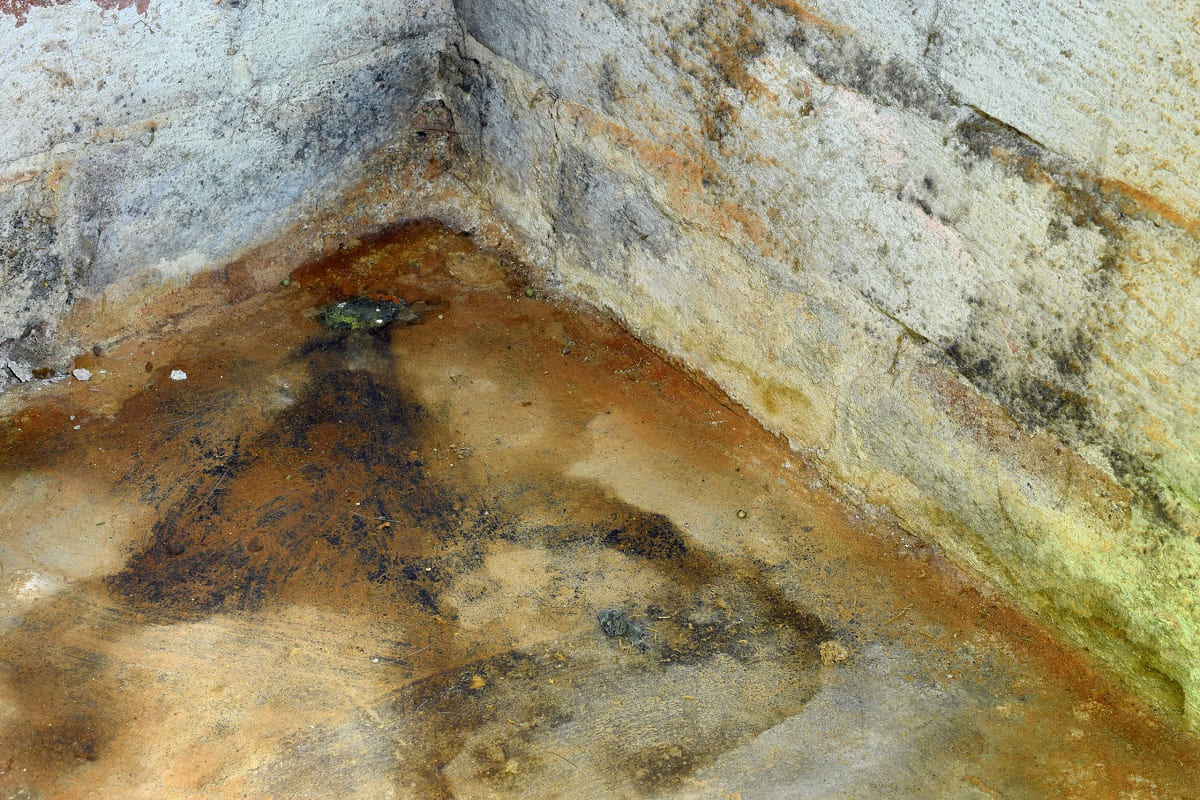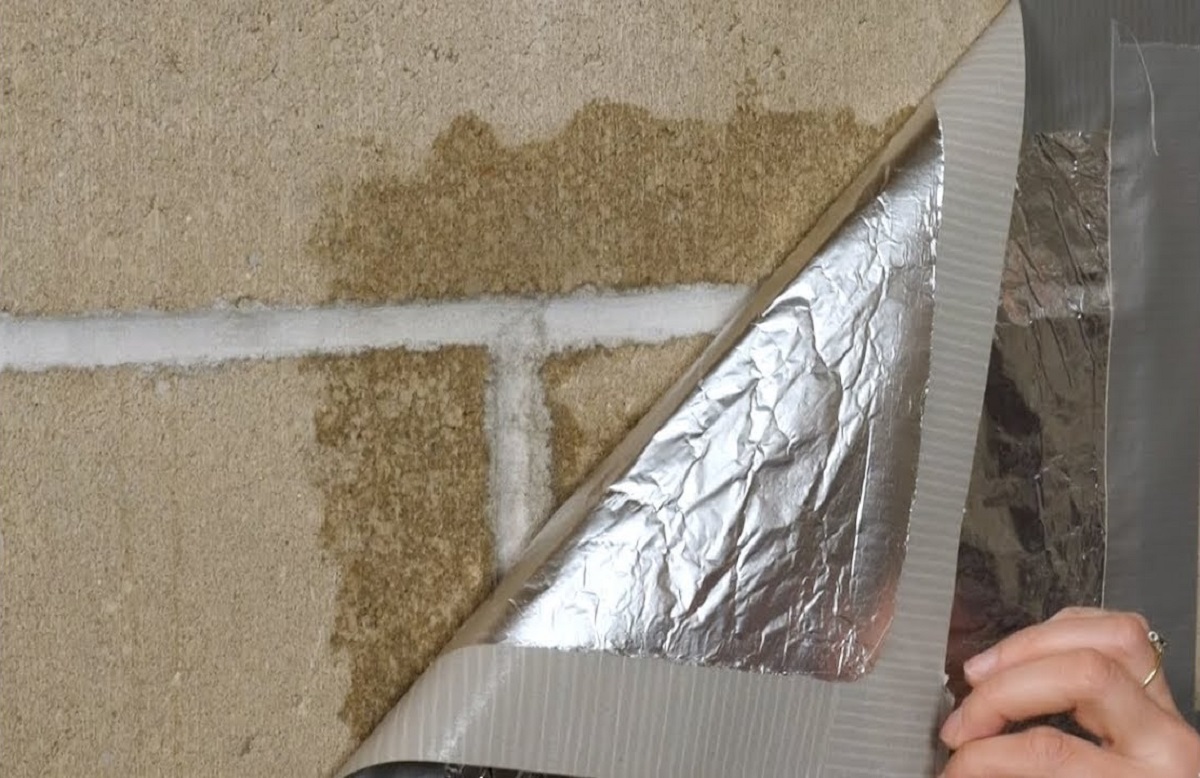

Articles
How To Get Natural Light Into A Basement
Modified: September 2, 2024
Discover the best articles on how to bring natural light into your basement. Learn practical tips and explore creative ideas to brighten up your underground space.
(Many of the links in this article redirect to a specific reviewed product. Your purchase of these products through affiliate links helps to generate commission for Storables.com, at no extra cost. Learn more)
Introduction
Basements are often associated with dark and gloomy spaces, lacking natural light. However, there are various techniques and strategies you can employ to bring natural light into a basement, transforming it into a bright and inviting area.
Having natural light in a basement can greatly enhance its functionality and aesthetic appeal. It creates a more welcoming atmosphere, helps improve mood and productivity, and can even make the space feel larger. Whether you are planning to convert your basement into a home office, a playroom, a gym, or simply a cozy living space, finding ways to introduce natural light is essential.
In this article, we will explore different methods to get natural light into a basement, from assessing the space and creating light wells to utilizing mirrors, light paint colors, and artificial lighting. With these tips, you’ll be able to brighten up your basement and enjoy the benefits of natural light.
Key Takeaways:
- Transform your basement into a bright and inviting space by creating light wells, installing egress windows, using mirrors and reflective surfaces, choosing light paint colors, and incorporating strategic artificial lighting.
- Assess your basement’s natural light potential, make necessary modifications, and employ a combination of techniques to maximize natural light entry, creating a welcoming and functional environment.
Read more: How To Get Basement Smell Out Of Basement
Assessing the Basement
Before implementing any strategies to bring natural light into your basement, it is important to thoroughly assess the space. This will help you identify the best areas to target for maximizing natural light penetration.
Start by examining the existing windows and their positioning. Take note of the size, type, and condition of the windows. Are they large enough to allow sufficient natural light into the basement? Are they in good condition, or do they need to be replaced or repaired?
Next, consider the layout and design of the basement. Are there any areas that receive more natural light than others? Are there any obstructions or structural elements that may hinder the entry of natural light? Take note of any walls, pillars, or other elements that may need to be modified or removed to facilitate the flow of light.
Additionally, observe how the natural light behaves in the basement throughout the day. Note the intensity and direction of the sunlight. This will help you determine the ideal locations for installing windows or creating light wells.
Lastly, assess the overall ambiance and color scheme of the basement. Dark colors on walls and furniture can absorb light, contributing to a gloomy atmosphere. Consider repainting the walls with lighter hues or incorporating brighter furniture to help reflect light and create a more airy feel.
By thoroughly assessing the basement, you will have a clearer understanding of its current limitations and potential. This will guide you in implementing the most effective methods to bring in natural light.
Creating Light Wells
One effective way to bring natural light into a basement is by creating light wells. A light well is an excavated area adjacent to the basement with walls that allow natural light to penetrate into the space.
To create a light well, start by determining the location and size of the well. Consider areas with the highest potential for sunlight exposure, such as a south-facing wall. The size of the well will depend on the available space and the desired amount of natural light.
Next, excavate the designated area outside the basement. Dig down to the desired depth, keeping in mind the legal requirements and any necessary permits. Ensure that the walls of the light well are properly reinforced to prevent collapse.
After excavating, install a retaining wall around the perimeter of the light well. This will provide support and prevent soil erosion. Choose a material that complements the aesthetics of your home, such as bricks or stones.
To maximize the entry of natural light, consider installing a transparent cover or grating on top of the light well. This will protect against debris or water accumulation while allowing sunlight to filter through. Additionally, consider adding a small drainage system to prevent water from collecting in the well.
To further enhance the illumination, you can paint the walls and flooring of the light well with light colors that will reflect and amplify the natural light. This will create a more radiant and inviting atmosphere in the basement.
Creating a light well may require the assistance of professionals, especially when it comes to excavation and ensuring structural integrity. Consult with a contractor or architect to ensure that the light well is properly designed and implemented.
By incorporating light wells into your basement design, you can introduce an abundant amount of natural light, creating a bright and airy space that feels connected to the outdoors.
Installing Egress Windows
Egress windows are not only important for safety and emergency exits but can also serve as a valuable source of natural light in a basement. These windows are typically larger than standard basement windows and are designed to allow both light and fresh air into the space.
Before installing egress windows, check with local building codes and regulations to ensure compliance. These requirements vary by location, and it’s important to follow them to ensure the safety and legality of the installation.
Start by selecting the appropriate location for the egress window. Ideally, it should be placed in an area that receives ample natural light and is easily accessible from inside the basement. A well-placed egress window can create a focal point and maximize the amount of light entering the space.
Next, carefully measure the dimensions needed for the window. Egress windows are typically larger than standard basement windows to meet the building code requirements. Ensure that there is enough space to accommodate the window and that it fits seamlessly into the existing architecture of your home.
Hire a professional contractor to cut through the concrete or masonry walls of the basement and create the window opening. This requires specialized equipment and expertise to ensure a precise and structurally sound installation.
After the opening is created, install the egress window securely. Use waterproofing techniques to protect against moisture infiltration, and properly seal any gaps to ensure energy efficiency. Consider adding window wells around the egress window to allow more natural light to penetrate the basement.
Enhance the aesthetics of the egress window by choosing a window frame and style that complements the overall design of your home. You can also add window treatments, such as blinds or curtains, to control the amount of light entering the basement.
Egress windows not only bring in natural light but also provide ventilation and an emergency escape route. They are a valuable investment that enhances both the functionality and safety of your basement.
Consider installing window wells to allow natural light to enter the basement. These can be paired with reflective surfaces inside to maximize the amount of light that enters the space.
Using Mirrors and Reflective Surfaces
Mirrors and reflective surfaces are excellent tools for maximizing natural light in a basement. They work by bouncing and dispersing light throughout the space, creating a brighter and more open atmosphere.
Strategically placing mirrors in a basement can have a significant impact on the amount of natural light. Consider positioning a large mirror opposite a window or light source. This will reflect the incoming light and distribute it throughout the room, effectively doubling the amount of illumination.
In addition to traditional mirrors, you can also incorporate mirrored surfaces in other elements of the basement. For example, mirrored furniture, such as tables or cabinets, can create a sense of depth and reflect light from various angles.
Another option is to use reflective surfaces, such as glass or metallic accents, in your basement decor. This can be achieved through the use of glass tabletops, metallic finishes on furniture or fixtures, or even decorative objects that have reflective qualities.
Consider incorporating these reflective surfaces strategically in the basement design. For instance, place a glass tabletop on a console table near a window, allowing the light to pass through and illuminate the surrounding area.
Furthermore, you can use reflective materials in wall coverings, such as wallpaper with metallic accents or reflective tiles. This can help bounce the available natural light around the space, making it feel brighter and more open.
It’s important to note that while mirrors and reflective surfaces can enhance natural light, they should be used in moderation. Too many reflective surfaces can create glare and an overpowering visual effect.
Experiment with different positioning and types of mirrors to find the optimal arrangement for your basement. By strategically incorporating mirrors and reflective surfaces, you can amplify the natural light and create a more spacious and inviting environment.
Read more: Ghost Light Mastering Natural Illumination
Utilizing Light Paint Colors
Choosing the right paint colors for your basement can have a significant impact on the amount of natural light that is reflected and perceived in the space. Light paint colors have the ability to brighten up a basement and create the illusion of a larger and more open area.
When selecting paint colors, opt for light and neutral tones. Shades of white, cream, beige, and pastel colors are excellent choices as they have high light-reflective properties. These colors bounce natural light around the room, making it appear brighter and more spacious.
Avoid using dark colors, as they absorb light and can make the basement feel even darker. Darker paint shades also have a tendency to make the space feel smaller and more confined.
Consider using different shades of light paint colors to create visual interest and dimension. For example, you can paint the walls a soft cream color and use a slightly lighter shade for the ceiling. This technique helps to amplify the sense of height and openness in the basement.
In addition to the walls, pay attention to the color of the flooring and other surfaces in the basement. Light-colored flooring, such as light wood or light-colored tiles, can help reflect and enhance the natural light in the space.
When choosing paint finishes, opt for semi-gloss or satin finishes, as they have more reflective properties compared to flat or matte finishes. A glossy finish can further amplify the light-reflective qualities of the paint, adding to the brightness of the space.
Remember that lighting conditions in a basement can vary throughout the day. It is recommended to test the paint colors under different lighting conditions to ensure they maintain their bright and airy effect.
By utilizing light paint colors on the walls, ceiling, and other surfaces, you can create a visually appealing and light-filled basement that feels inviting and spacious.
Incorporating Artificial Lighting
While natural light is ideal, incorporating artificial lighting plays a crucial role in ensuring a well-lit basement, especially during times when natural light is limited. Proper lighting can enhance the ambiance and functionality of the space, making it more inviting and comfortable.
Start by assessing the existing lighting in your basement. Determine whether it provides sufficient illumination throughout the space. If the current lighting is inadequate or outdated, consider upgrading to more efficient and modern lighting fixtures.
One effective way to illuminate a basement is by installing recessed lighting. These fixtures are embedded into the ceiling, providing a seamless and unobtrusive lighting solution. Use multiple recessed lights strategically placed throughout the space to ensure even light distribution.
In addition to recessed lighting, consider incorporating other types of lighting fixtures, such as pendant lights, track lights, or wall sconces. These fixtures can add different layers of lighting and create a more visually appealing environment.
Task lighting is essential for specific activities in the basement, such as reading, working, or crafting. Utilize desk lamps, floor lamps, or under-cabinet lighting to provide focused and adjustable lighting for these tasks.
Furthermore, consider installing dimmer switches for your lighting fixtures. This allows you to control the brightness levels in the basement based on your needs and preferences. Dimmers also create a more versatile and customizable lighting atmosphere.
When choosing light bulbs, opt for energy-efficient options, such as LED or CFL bulbs. These bulbs not only consume less energy but also have a longer lifespan, reducing maintenance and replacement costs.
Another way to enhance artificial lighting is by using mirrors and reflective surfaces in combination with artificial lights. Placing a mirror near a lighting fixture can help bounce and distribute the light, creating a brighter and more spacious feel in the basement.
Experiment with different lighting options and placements to determine the optimal combination for your basement. Create a balance between ambient lighting for overall illumination and task lighting for specific activities.
By incorporating artificial lighting strategically, you can create a well-lit and welcoming basement that meets your functional and aesthetic needs, even in the absence of natural light.
Conclusion
Bringing natural light into a basement is a transformative process that can greatly enhance the functionality and atmosphere of the space. By utilizing various strategies such as creating light wells, installing egress windows, incorporating mirrors and reflective surfaces, utilizing light paint colors, and incorporating artificial lighting, you can create a basement that feels bright, open, and inviting.
Assessing the basement and understanding its limitations is the first step in the process. By identifying areas with the highest potential for natural light and making necessary modifications, you can optimize the entry of sunlight into the space. Creating light wells by excavating adjacent areas and installing transparent covers allows for ample natural light penetration while maintaining structural integrity.
Egress windows not only provide safety and emergency exits but also serve as effective sources of natural light. Installing these windows, coupled with window wells, can significantly increase the brightness and ventilation in the basement.
Mirrors and reflective surfaces are powerful tools for enhancing natural light. Placing mirrors strategically opposite windows or light sources reflects and disperses light throughout the room, making the space feel brighter and more spacious.
Choosing light paint colors is another important consideration. Light and neutral tones on the walls and surfaces help reflect and amplify natural light, creating a more airy and open feel in the basement. Incorporating artificial lighting, such as recessed lights, pendant lights, and task lighting, ensures a well-lit environment even when natural light is limited. Dimmers and energy-efficient bulbs allow for customized lighting options.
In conclusion, by employing a combination of these strategies, you can successfully bring natural light into your basement, transforming what was once a dark, unwelcoming space into a bright and inviting area. Whether you’re converting your basement into a living space, office, or recreational area, maximizing natural light ensures a pleasant and enjoyable atmosphere. Embrace the natural light and let it breathe life into your basement.
Frequently Asked Questions about How To Get Natural Light Into A Basement
Was this page helpful?
At Storables.com, we guarantee accurate and reliable information. Our content, validated by Expert Board Contributors, is crafted following stringent Editorial Policies. We're committed to providing you with well-researched, expert-backed insights for all your informational needs.















0 thoughts on “How To Get Natural Light Into A Basement”